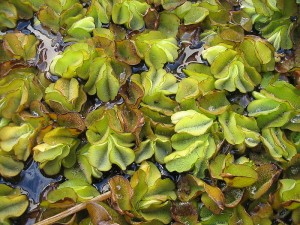FRIDAY, 7 MAY 2010
The water fern is extremely hydrophobic; if it is submerged and subsequently pulled out the liquid immediately balls up and drips off and the plant is completely dry again. This superhydrophibicity arises due to a flimsy film of air that surrounds the surface of the fern; tiny water repelling hairs on the surfaces of the fern's leaves keep the water from coming into contact with the leaf.Many groups have been trying to model the natural super hydrophobic surfaces in order to reproduce them for applications such as rapidly drying swimsuits and coating on ships. But the layer that they have been able to produce is generally unstable and disappears in moving water in just few hours.
The recent discovery might help to solve this problem, the team have been able to explain how the fern keeps its layer intact for weeks at a time. They found that the outermost tips of the hairs on the leaves are hydrophilic; they love water. "They plunge into the surrounding liquid and basically staple the water to the plant at regular intervals." The air layer can therefore not escape so easily.
This new knowledge could revolutionise shipbuilding. An air layer created at the hull of the ships can save propulsion energy lost through friction of the water by ten percent, saving on fuel consumption.
Written by Nitika Somani

